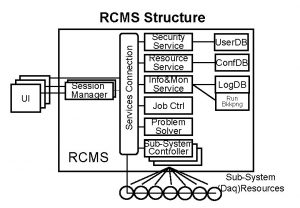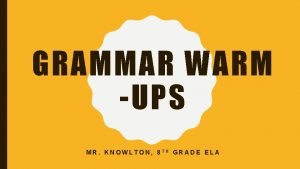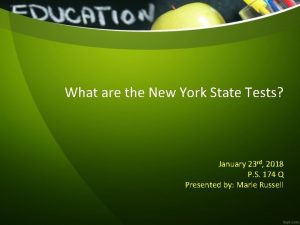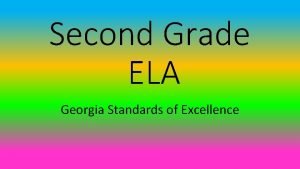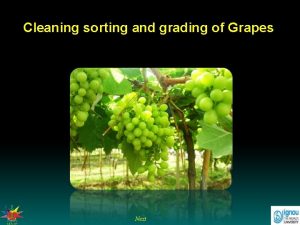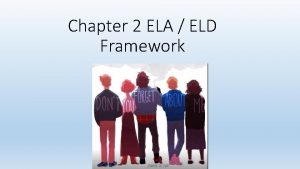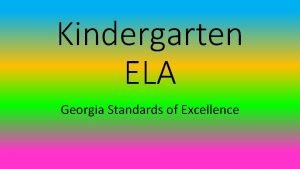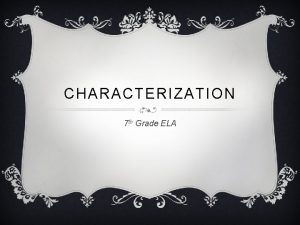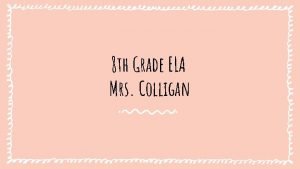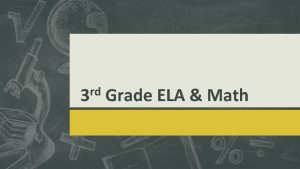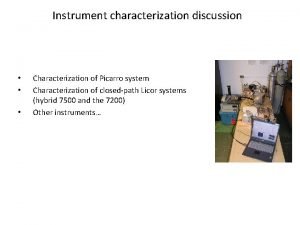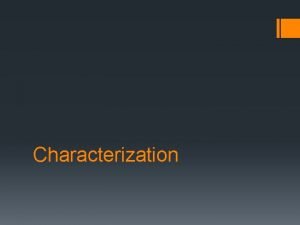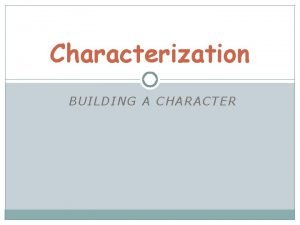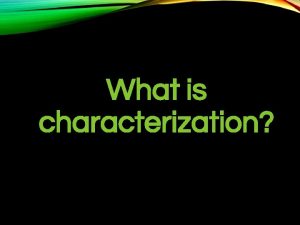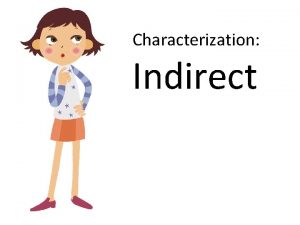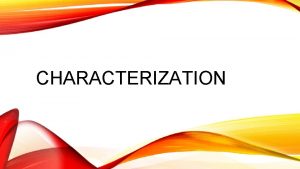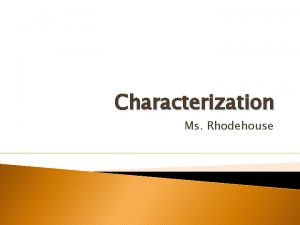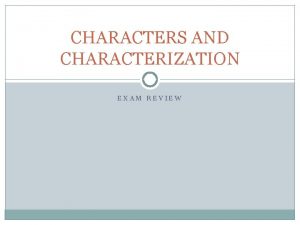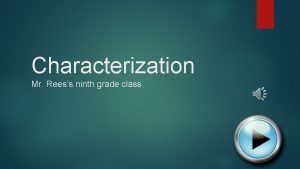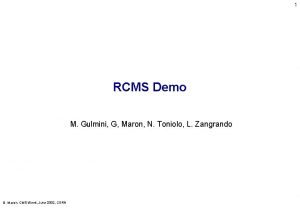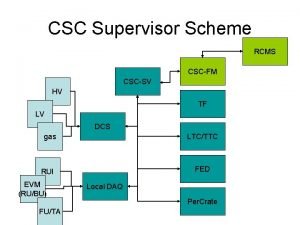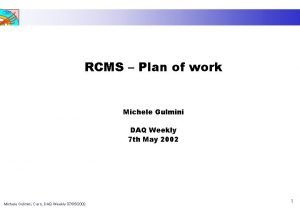Characterization S Thomas RCMS 6 th Grade ELA



















- Slides: 19

Characterization S. Thomas RCMS 6 th Grade ELA

The Standard l. ELACC 6 RL 3 - Describe how a particular story’s or drama’s plot unfolds in a series of episodes as well as how the characters respond or change as the plot moves towards a resolution.

“I CAN” Statements l. I CAN break down the plot of a story and give evidence that supports each part of the plot. l I CAN tell what characterization is. l I CAN use the STEAL acronym to help me find out different things about a character. l I CAN identify what type of character the main character is and provide evidence that supports my answer.

The “Essentials” What is characterization? 2. What are the two different kinds of characters in a story? 3. How can a character change within the plot from beginning to end? 1.

What is Characterization? Characterization is the process by which the author reveals the personality of the characters. There are two types of characterization: direct and indirect.

Direct Characterization Direct characterization is when the author TELLS the audience what the personality of the character is. Example: “The patient boy and quiet girl were both at the game. ” The author is telling us that the boy is patient and the girl is kind.

Indirect Characterization Indirect characterization is when the author SHOWS things that reveal the personality of the character. There are FIVE different methods of indirect characterization: Speech, Thoughts, Effect on other characters, Actions, and Looks. (STEAL)

Indirect Characterization Speech- What does the character say? How does the character speak? Example: “Hey, we can have lots of fun at camp this summer! I love being outside!” This shows us the character is upbeat and happy.

Indirect Characterization Thoughts- What is revealed through the character’s thoughts and feelings? Example: I wish it would stop raining. I am tired of sitting inside! This shows us the character is not happy about the situation.

Indirect Characterization Effect on Others- What is revealed through the character’s effect on other people? How do other characters feel or behave in reaction to the character? Example: The boy glared at his sister as she ate his dessert. This shows us that the character is upset about his sister’s behavior and inability to think of others.

Indirect Characterization Actions- What does the character do? How does the character behave? Example: The girl rode the lawn mower through the house and into the garage. This shows us the girl is not concerned with rules or safety.

Indirect Characterization Looks- What does the character look like? How does the character dress? Example: The little girl left the game with slumped shoulders and a frown on her face. This shows us the little girl is not enjoying herself and is upset.

The Difference Remember, the difference between direct characterization and indirect characterization is TELLING v. SHOWING! Indirect characterizations are like clues about the characters. There is no mystery with direct characterization because the author gives us the information we need to know!

static vs dynamic characters

dynamic character In a story, a DYNAMIC CHARACTER is someone who changes in an important and significant way. This internal change happens as a result of events in the plot. l Ebenezer Scrooge, from Charles Dickens's A Christmas Carol, is a classic example. When we first meet him, he is mean, bitter, and greedy. Through his experiences with the three ghosts, he becomes generous, kind, & beloved. l

static character l. A static character is someone whose personality does NOT change significantly throughout the events in the story's plot. Internally, this character is basically the same as he/she was at the story’s beginning. l Disney, as usual, is a great source for an example. Cinderella remains friendly, honorable, and positive despite being orphaned, abused, and taken advantage of by her wicked stepmother and stepsisters.

FLAT vs. ROUND characters

l FLAT Characters A character whose distinguishing moral qualities or personal traits are summed up in one or two traits. They are not complicated or deep characters. l For example, Scar, from The Lion King, is very much a FLAT character. He is JUST PLAIN EVIL & MEAN! There is never any point during the movie where he could logically be described any other way. He’s not complicated at all; he’s easy to predict.

ROUND Characters A character whose distinguishing moral qualities or personal traits are complex and many-sided. These characters are complicated and can have both good and bad qualities. l For example, Woody from Toy Story, is definitely a ROUND character He’s an honest, loyal friend a concerned leader. However, he is not perfect. There are times where his flaws show through; he makes the wrong decisions, gets jealous, and is even selfish at times. He’s a complicated guy! l
 Rcms
Rcms Rcms
Rcms Rcms ui
Rcms ui Maisa ela 8th grade
Maisa ela 8th grade Mcas ela grade 10
Mcas ela grade 10 8th grade ela warm ups
8th grade ela warm ups Engageny ela grade 5 released questions
Engageny ela grade 5 released questions Georgia standards of excellence ela
Georgia standards of excellence ela Definition of direct and indirect characterization
Definition of direct and indirect characterization Direct vs indirect characterization
Direct vs indirect characterization Betty parris the crucible indirect characterization
Betty parris the crucible indirect characterization Thomas mocker and thomas stewart
Thomas mocker and thomas stewart Initial grade and transmuted grade
Initial grade and transmuted grade Meta - change morph
Meta - change morph Cinderella went upstairs to kiss her fella
Cinderella went upstairs to kiss her fella Milk grades
Milk grades Culinary
Culinary Grade grade
Grade grade Ela/eld framework
Ela/eld framework Georgia kindergarten ela standards
Georgia kindergarten ela standards


